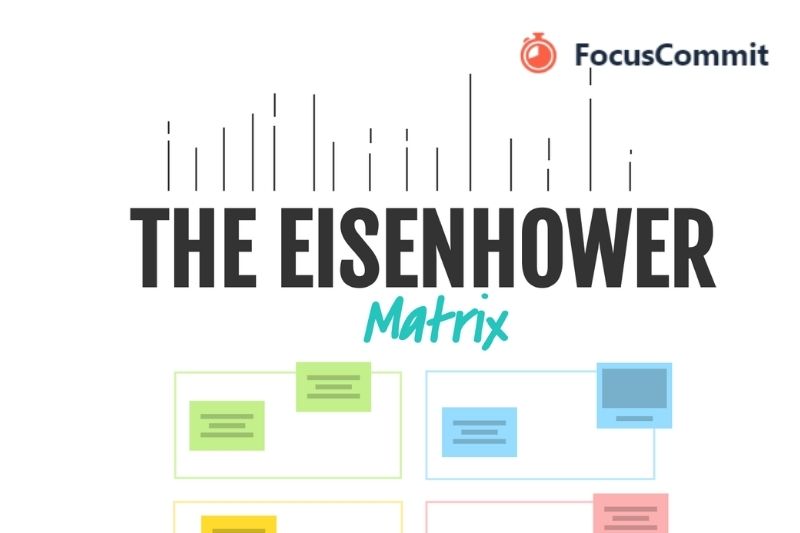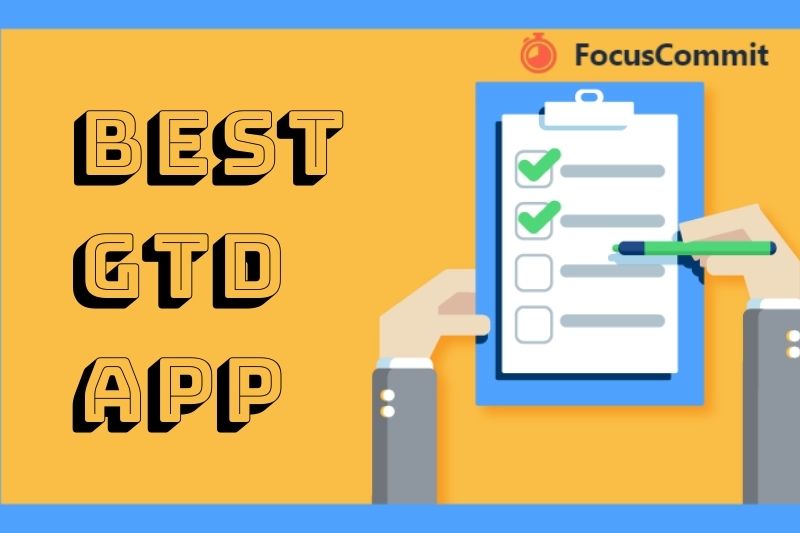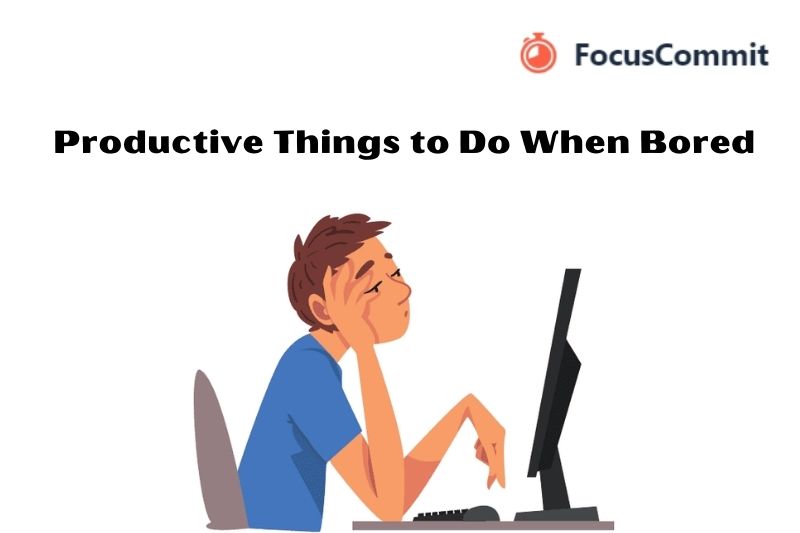In a world filled with endless tasks and responsibilities, mastering the art of prioritization is essential for personal and professional success. The Eisenhower Matrix, named after former U.S. President Dwight D. Eisenhower, provides a simple yet powerful framework for organizing your tasks based on their urgency and importance.
Whether you’re struggling to stay on top of your to-do list or seeking a more efficient way to manage your workload, the Eisenhower Matrix template is your ultimate tool for making informed decisions about allocating your time and effort.
In this guide, Focuscommit will explore the principles behind the Eisenhower Matrix and show you how to leverage our template to maximize your productivity and achieve your goals. Say goodbye to overwhelm and hello to effective task management – let’s dive in!
What is an Eisenhower Matrix?
The Eisenhower Matrix serves as an invaluable prioritization tool, aiding individuals in the effective organization of tasks based on their urgency and importance levels. This matrix categorizes tasks into four distinct quadrants, each dictating a specific course of action:
Urgent and important: Tasks falling into this category require immediate attention and should be addressed promptly.
Urgent but not important: These tasks, although critical, may not be crucial for your direct involvement. Delegating such tasks to others is often the recommended approach.
Not urgent but important: Tasks in this quadrant hold significance but need more immediate urgency. Scheduling them for later attention ensures they stay caught up.
Not urgent and unimportant: Tasks that neither demand immediate attention nor carry significant importance can be safely removed from your to-do list.
When faced with a daunting to-do list, the Eisenhower Matrix clarifies by highlighting which tasks should be tackled first and offering guidance on effectively managing the remaining workload.
What is an Eisenhower Matrix template?
An Eisenhower Matrix template is a valuable resource for expeditiously generating an Eisenhower Matrix whenever needed to streamline task prioritization. Whether your goal is to craft a matrix on a daily or weekly basis, this template offers a reusable framework.
You can avoid the repetitive task of establishing the matrix from scratch by simply duplicating the template, inserting your studies, and initiating the prioritization process.
With a pre-established template, the setup phase becomes obsolete, allowing you to promptly fill in the required details and adhere to a predefined workflow for each task’s prioritization.
Benefits of a digital Eisenhower Matrix Template
An Eisenhower Matrix aims to streamline task management rather than burden you with additional work. Fortunately, when you employ a digital format for your matrix, there’s no need to grapple with spreadsheets or repetitive manual task copying.
Instead, you can effortlessly input your tasks into the matrix, specify their urgency and importance, and seamlessly move them to the appropriate section with a simple drag and drop. Moreover, should priorities shift, you can promptly update your matrix in real-time without re-copying the entire content.
By utilizing a digital Eisenhower Matrix template, you can:
- Simplify decision-making by adhering to a predefined task prioritization procedure.
- Rapidly integrate tasks into your Eisenhower Matrix template, obviating the need for repetitive to-do list copying.
- Access a unified source of truth for each task, as the functions in your matrix coexist within your task list.
- Include contextual information, attachments, images, or videos for each task.
- Share your matrix with project stakeholders to elucidate your work prioritization.
- Assign due dates to tasks designated for delegation or future scheduling.
- Seamlessly relocate tasks among different sections of your matrix.
- Effortlessly modify your matrix should priorities change in the future.
How do you create a digital Eisenhower Matrix template with Focuscommit?
In its simplest form, your Eisenhower Matrix template should incorporate fields to capture key details for each task:
Urgency: Designate whether a job is urgent or not urgent.
Importance: Determine whether a task holds importance or is of lesser significance.
Recommended action: Specify the appropriate action for each task, including “Do,” “Delegate,” “Schedule,” or “Delete.”
To effectively implement this structure, consider implementing two custom tags within your template – one for urgency and another for importance.
This tagging system streamlines identifying and categorizing individual tasks’ urgency and importance levels. Furthermore, it is beneficial to create distinct sections within your template corresponding to the recommended actions: “Do,” “Delegate,” “Schedule,” and “Delete.” Once you have assessed the urgency and importance of each task, drag and drop them into the respective sections for seamless organization.
The Eisenhower Matrix is a valuable tool for task prioritization, allowing you to categorize tasks based on their importance and urgency. It aids in distinguishing critical activities from those that require minimal attention or can be omitted entirely.
Focuscommit, an encompassing diagramming software, offers an extensive array of Eisenhower Matrix templates, each equipped with a potent diagram editor. Below, we highlight a selection of these templates, accessible for viewing by simply clicking on them and editable with the “Edit” button. Additionally, a wealth of additional templates is at your disposal within the diagram maker tool.
How do you use your Eisenhower Matrix template?
Step 1: Populate the “Do First” Quadrant
Begin by filling in the upper left quadrant, which contains tasks of utmost importance requiring immediate attention. These tasks demand immediate action, such as responding to an urgent email from your supervisor or scheduling a vital doctor’s appointment.
Step 2: Complete the “Schedule” Quadrant
Shift your focus to the upper right quadrant, where you identify important but not urgently pressing tasks. These tasks can be scheduled for the future and need a place in your calendar. Examples include catching up with a friend or arranging a non-urgent meeting with a colleague. The majority of your tasks fall into this category.
Step 3: Attend to the “Delegate” Quadrant
Descend to the lower left quadrant, designated for tasks of lesser urgency than the “Do First” quadrant but still requiring prompt attention. Remember to follow up when delegating functions in this category to ensure proper execution. For instance, you can trust your attendance to a teammate if you’re called into a meeting.
Step 4: Tackle the “Don’t Do” Quadrant
Focus on the lower right quadrant, reserved for best left-undone tasks. Consider the charges that lead to procrastination and hinder productivity, such as excessive social media scrolling.
Step 5: Regularly Review and Update Your Matrix
Continuously reassess your matrix to keep it aligned with your evolving priorities. Your task priorities may shift throughout the day or in response to emerging tasks. Utilize the template to swiftly add, relocate, or modify charges, ensuring your matrix remains up-to-date and effective.
Free Eisenhower Matrix Templates
- Eisenhower Matrix Template for Microsoft Word and Google Docs
- Eisenhower Matrix Template for Excel and Google Sheets
- Eisenhower Decision Matrix Template for Adobe PDF
- Eisenhower Matrix Template for PowerPoint and Google Slides
- Eisenhower Priority Matrix Template for Microsoft Word and Google Docs
FAQs
1. Is an Eisenhower Matrix template necessary for you?
Utilizing an Eisenhower Matrix template can be incredibly beneficial if you’re seeking an effective method to streamline and address your task list.
This template simplifies the decision-making process for handling each task, alleviating the burden of determining which tasks should take precedence. It offers a structured approach and a clear path to follow, especially when confronted with an extensive list of tasks requiring prioritization.
2. How frequently should you employ an Eisenhower Matrix template?
The frequency of using this template largely hinges on the influx of new tasks you encounter.
To illustrate, if your daily routine involves a substantial influx of new assignments, you might find it beneficial to craft an Eisenhower Matrix daily in the morning. Conversely, if new tasks emerge less frequently, a weekly approach, such as creating a matrix once a week, maybe more suitable for your needs.
3. Who should receive your Eisenhower Matrix template?
If you hold a managerial position, sharing your Eisenhower Matrix template with your team is prudent.
This collaborative approach can assist them in effectively managing their tasks. By implementing a unified prioritization process, you’ll ensure everyone is on the same page, optimizing your team’s overall efficiency.
Furthermore, prioritization is a valuable strategy for preventing overwork and burnout among your team members.
Conclusion
In conclusion, the Eisenhower Matrix template is a powerful tool for prioritizing tasks and achieving greater productivity and focus. You can make informed decisions about where to invest your time and effort by categorizing tasks into four quadrants based on urgency and importance.
This versatile and adaptable template makes it valuable for professionals, students, and individuals seeking to enhance their time management skills.
By consistently applying the principles of the Eisenhower Matrix, you can reduce stress, minimize procrastination, and ensure that important tasks are addressed promptly.
This tool empowers you to take control of your duties and goals, guiding you toward greater efficiency and fulfillment in your personal and professional life. So, start using the Eisenhower Matrix template today and experience the benefits of effective prioritization.




